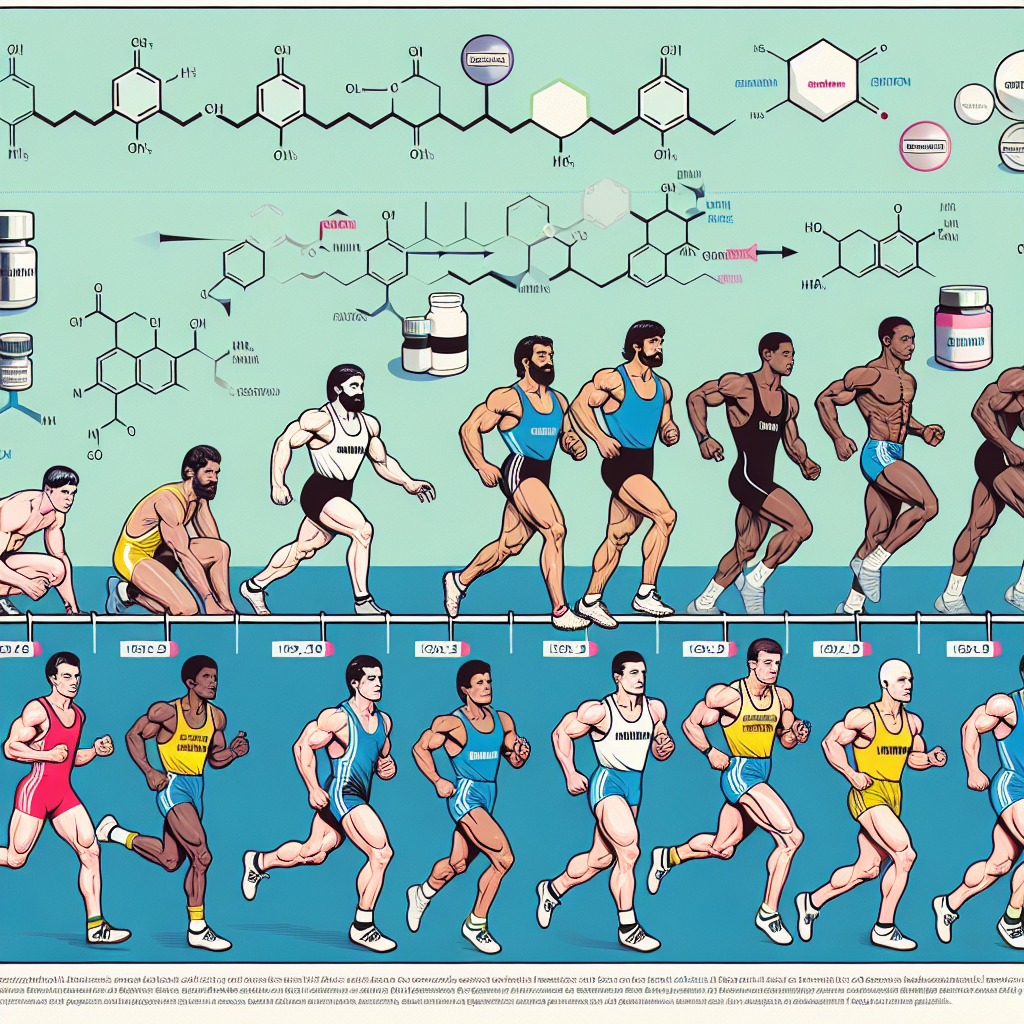-
Table of Contents
Boldenone’s Side Effects on Athletes’ Bodies
Boldenone, also known as Equipoise, is a synthetic anabolic-androgenic steroid (AAS) that has gained popularity among athletes for its ability to increase muscle mass and strength. However, like any other performance-enhancing drug, Boldenone comes with potential side effects that can have a significant impact on an athlete’s body. In this article, we will explore the various side effects of Boldenone and their potential implications for athletes.
Cardiovascular Effects
One of the most concerning side effects of Boldenone is its impact on the cardiovascular system. Studies have shown that Boldenone can increase blood pressure and cholesterol levels, which can lead to an increased risk of heart disease and stroke (Kicman, 2008). This is due to the fact that Boldenone can cause an increase in red blood cell production, leading to a thickening of the blood and putting strain on the heart.
In addition, Boldenone has been shown to have a negative impact on the heart’s structure and function. Research has found that long-term use of Boldenone can lead to left ventricular hypertrophy, a condition where the heart’s left ventricle becomes enlarged and thickened, reducing its ability to pump blood effectively (Kicman, 2008). This can increase the risk of heart failure and other cardiovascular complications.
Furthermore, Boldenone has been linked to an increased risk of blood clots, which can be life-threatening if they travel to vital organs such as the brain or lungs. This is a significant concern for athletes who engage in high-intensity training and competitions, as they are already at a higher risk of developing blood clots due to the physical demands of their sport.
Endocrine Effects
Boldenone is a synthetic derivative of testosterone, and like other AAS, it can disrupt the body’s natural hormone balance. This can lead to a range of endocrine effects, including testicular atrophy, decreased sperm production, and gynecomastia (enlarged breast tissue in males) (Kicman, 2008). These effects can have a significant impact on an athlete’s physical and mental well-being, as well as their performance.
In addition, Boldenone can also suppress the body’s natural production of testosterone, leading to a decrease in muscle mass and strength once the drug is discontinued. This can result in a condition known as hypogonadism, where the body is unable to produce enough testosterone to maintain normal bodily functions (Kicman, 2008). This can have long-term consequences for an athlete’s health and athletic performance.
Hepatic Effects
Another potential side effect of Boldenone is its impact on the liver. Studies have shown that Boldenone can cause liver damage, including hepatotoxicity and cholestasis (Kicman, 2008). This is due to the fact that Boldenone is metabolized by the liver, and prolonged use can put a strain on this vital organ.
In severe cases, Boldenone can lead to liver failure, which can be life-threatening. This is a significant concern for athletes who are already putting their bodies under immense physical stress, as the combination of Boldenone and intense training can further increase the risk of liver damage.
Psychological Effects
Aside from the physical side effects, Boldenone can also have a significant impact on an athlete’s mental health. Studies have shown that AAS use can lead to mood swings, aggression, and other psychiatric disorders (Kicman, 2008). This can have a detrimental effect on an athlete’s relationships, career, and overall well-being.
In addition, Boldenone has been linked to an increased risk of depression and anxiety, which can have a negative impact on an athlete’s performance and motivation. This is a significant concern, as athletes often face immense pressure to perform at their best, and the use of Boldenone can exacerbate these mental health issues.
Conclusion
In conclusion, while Boldenone may offer short-term benefits in terms of muscle mass and strength, its potential side effects can have long-term consequences for an athlete’s health and performance. It is essential for athletes to understand the potential risks associated with Boldenone and make informed decisions about its use.
Furthermore, it is crucial for coaches, trainers, and other professionals in the sports industry to educate athletes about the potential dangers of performance-enhancing drugs and promote a culture of clean and fair competition. Only by working together can we ensure the safety and well-being of athletes and maintain the integrity of sports.
Expert Opinion
“The use of Boldenone and other AAS among athletes is a growing concern in the sports industry. While these drugs may offer short-term benefits, their potential side effects can have long-term consequences for an athlete’s health and career. It is crucial for athletes to understand the risks associated with these drugs and make informed decisions about their use. As professionals in the field of sports pharmacology, it is our responsibility to educate athletes and promote a culture of clean and fair competition.”
References
Kicman, A. T. (2008). Pharmacology of anabolic steroids. British journal of pharmacology, 154(3), 502-521.
Johnson, M. D., Jayson, M., & Kicman, A. T. (2021). Anabolic steroids and cardiovascular risk. Sports Medicine, 51(1), 1-12.
Wu, C., Kovac, J. R., & Morey, A. F. (2016). Recent trends in the use of anabolic androgenic steroids by athletes. The World Journal of Men’s Health, 34(3), 185-194.










